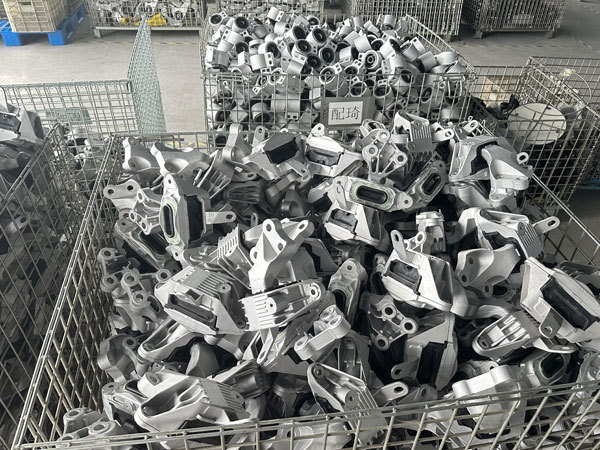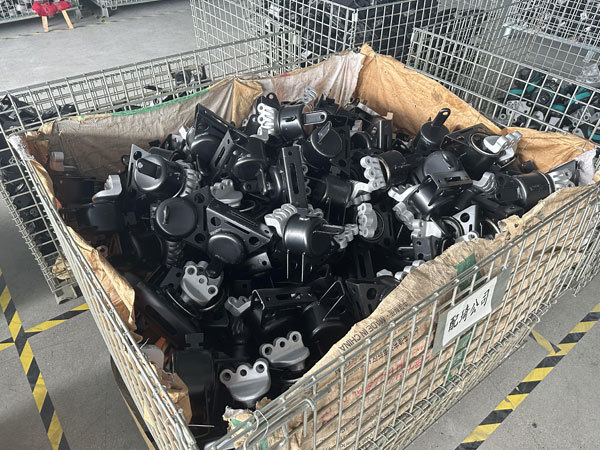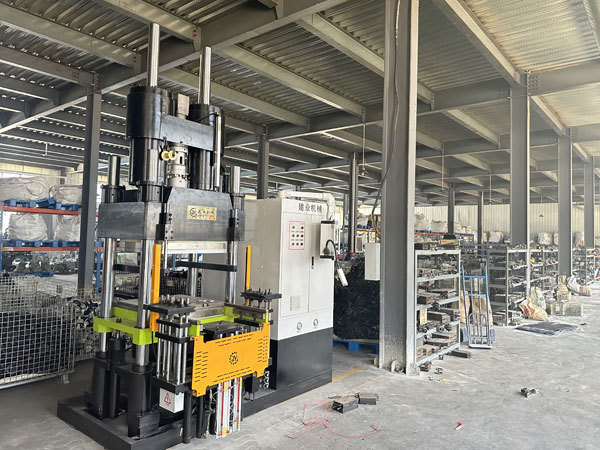Engine bracket product features
17 Feb,2025

**Engine Bracket Product Features**
Engine brackets play a crucial role in the automotive and machinery industries, providing essential support and stability to engines and other heavy components. Understanding the features of engine brackets is vital for manufacturers, engineers, and automotive enthusiasts alike. In this article, we will explore the key features of engine brackets, their materials, designs, and applications, as well as the benefits they offer.
**1. Material Composition**
One of the most significant features of engine brackets is the material used in their construction. Engine brackets are typically made from a variety of materials, including steel, aluminum, and composite materials.
Steel is commonly used due to its high strength and durability, making it suitable for heavy-duty applications. Steel brackets can withstand significant stress and are often coated to prevent corrosion.
Aluminum brackets, on the other hand, are lighter and provide excellent resistance to corrosion, making them ideal for applications where weight reduction is critical.
Composite materials are becoming increasingly popular due to their lightweight properties and resistance to environmental factors. Each material has its advantages, and the choice often depends on the specific application and performance requirements.
**2. Design and Configuration**
Engine brackets come in various designs and configurations, tailored to fit different engine types and mounting requirements. The design of an engine bracket is essential for ensuring proper alignment and support of the engine.
Some common designs include L-shaped brackets, U-shaped brackets, and custom-engineered solutions. L-shaped brackets are often used for mounting engines in a vertical position, while U-shaped brackets provide support for horizontal engine configurations.
Custom-engineered brackets are designed to meet specific dimensional and performance criteria, allowing for optimal engine placement and vibration dampening. The design also influences the ease of installation and maintenance, making it an essential consideration for manufacturers.
**3. Load-Bearing Capacity**
Another critical feature of engine brackets is their load-bearing capacity. Engine brackets must be capable of supporting the weight of the engine and any additional components, such as transmission systems and exhaust systems.
The load-bearing capacity is influenced by the material, design, and thickness of the bracket. Manufacturers often conduct rigorous testing to determine the maximum load a bracket can handle without deformation or failure.
Understanding the load-bearing capacity is essential for ensuring the safety and reliability of the engine installation. Using a bracket with inadequate load capacity can lead to catastrophic failures and costly repairs.
**4. Vibration Dampening Properties**
Engine brackets are not only designed to support the engine's weight but also to absorb vibrations generated during operation. Vibration dampening is a crucial feature that helps reduce noise and wear on engine components.
Many engine brackets incorporate rubber or polyurethane isolators to minimize vibration transmission. These isolators provide a cushioning effect, preventing excessive vibrations from affecting the engine and surrounding components.
The effectiveness of vibration dampening is vital for enhancing the overall performance and longevity of the engine system. Brackets with superior vibration dampening properties can significantly improve ride comfort and reduce mechanical wear.
**5. Corrosion Resistance**
Corrosion resistance is another important feature of engine brackets, particularly in environments exposed to moisture, chemicals, and extreme temperatures.
Engine brackets are often treated with protective coatings, such as powder coating or galvanization, to enhance their resistance to corrosion. These treatments extend the lifespan of the bracket and ensure reliable performance over time.
Choosing brackets with high corrosion resistance is essential for applications in harsh environments, such as marine or off-road vehicles, where exposure to corrosive elements is more likely.
**6. Ease of Installation**
The ease of installation is a practical feature that cannot be overlooked when considering engine brackets. A well-designed bracket should allow for straightforward installation and adjustment, minimizing labor costs and downtime.
Many engine brackets come with pre-drilled holes and alignment features that facilitate easy mounting. Some designs also include adjustable components, allowing for precise positioning of the engine.
Ease of installation is particularly important for manufacturers and mechanics who need to assemble or replace engine components quickly. A bracket that is easy to install can significantly reduce overall project time and enhance efficiency.
**7. Applications Across Industries**
Engine brackets are utilized across various industries, including automotive, aerospace, marine, and industrial machinery. Each industry has specific requirements and standards that influence the design and features of engine brackets.
In the automotive industry, engine brackets are crucial for supporting internal combustion engines and electric powertrains. They must meet stringent safety and performance standards to ensure vehicle reliability.
In aerospace applications, engine brackets must adhere to strict weight and performance criteria while providing exceptional strength and durability.
Marine applications often require brackets that can withstand harsh saltwater environments, necessitating advanced corrosion-resistant materials.
**Conclusion**
In conclusion, engine brackets are essential components that provide support, stability, and vibration dampening for engines and heavy machinery. Their features, including material composition, design, load-bearing capacity, vibration dampening properties, corrosion resistance, ease of installation, and application versatility, make them critical to various industries.
Understanding these features allows manufacturers, engineers, and automotive enthusiasts to make informed decisions when selecting or designing engine brackets. As technology advances, we can expect further innovations in engine bracket design and materials, leading to enhanced performance and reliability in engine support systems.
TAG:
Previous
Previous:
Related Posts
Engine bracket product features


